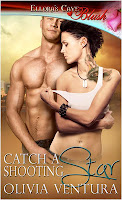To be honest, Different Hearts is the first historical
fiction novel I’ve had the pleasure of reviewing. I was initially drawn to the
story when I read an excerpt posted on-line by Elizabeth Sullivan. Her editing
was flawless, and her command of the language was far above the norm. I simply
had to read more, so I emailed Elizabeth to ask if I could review her book. I’m
glad I did.
The story begins in 1840 and covers the dark Civil War
period of American history. The focus is on the events that befall the affluent
Enraghty family in Newport, Rhode Island, and the offspring of a Miwok Indian
slave girl named Hannah in California. On the East Coast, Sophia Enraghty is
born an unwelcome arrival because she is not male. In California, Ezra is born
of Hannah, who is owned by Jordan and Claudia Rawlings. As fate would have it, Claudia
gives birth to a son on the same day Ezra is born. Because Hannah dies shortly after
childbirth, Jordan brings Ezra into his home, and makes him the personal slave
of his new son, Matthew.
From the outset, it is clear Elizabeth Sullivan did her
homework. Her enthralling descriptions of the way of life for the two families
transported my mind to a time where modern conveniences did not exist. Yet,
despite the hardships that were part of life, especially for the Miwok slaves,
the people themselves were not much different from those you might meet today.
Ezra and Matthew grow up together. Both are loved by Claudia
Rawlings, almost as twins, but Jordon treats the two vastly different. Ezra is
a slave; Matthew is Jordon’s son. A similar situation exists in the Enraghty
family. Sophia’s elder sister receives all her mother’s attention, and her
younger brother, Dylan, is raised by his father. Just as Ezra learns everything
in parallel with Matthew, Sophia learns everything in parallel with Dylan. The Civil War soon impacts both families. To avoid disgrace, Sophia travels to California
where she meets Ezra, who has grown to be an honorable man among men. Despite societal taboos, the two develop feelings for each other.
I won’t provide more details of the story; I don’t want to
spoil it. What I will say is that Elizabeth Sullivan brings the reader into the
lives of each of her characters with such finesse and clarity that one can
almost see the dust on the table in Sophia’s cabin, and smell the flowers in
the field. The story is developed around real events of the day: the naval and
land battles during the war, the gold rush, the freeing of the slaves and the
hardships of the day. Reading the book is like living in that time.
There is also enlightenment. Freeing the slaves in southern states
that seceded from the Union did not free the slaves elsewhere, and did not
change the slave status of the Indians in California. As the story develops, both
Ezra and Sophia must deal with their own enslavement, whether real or imposed
by the values and attitudes of society (white women did NOT marry Indians,
slaves or ex-slaves). The interplay of the townspeople with Ezra and Sophia is
so captivating that, by the time I finished reading the story, it wasn’t clear
to me whether the part of the title “From
bondage to Freedom” applied to Ezra … or to Sophia.






